Stocks & Indexes
October 21, 2006 0:30 a.m. ET (2:30 p.m. AET)
The next newsletter (an update on Gold, Crude Oil and the Dollar) will be on October 17th.
The Big Picture
Crude oil confirmed its break below support at $60/barrel and appears headed for a test of $55. Gold retreated to $591 and appears headed for a test of primary support at $540, while the dollar continues to range between $1.245 and $1.300 against the euro.
According to the Wright model, the probability of recession in the next four quarters remains a moderate 39 per cent.
USA
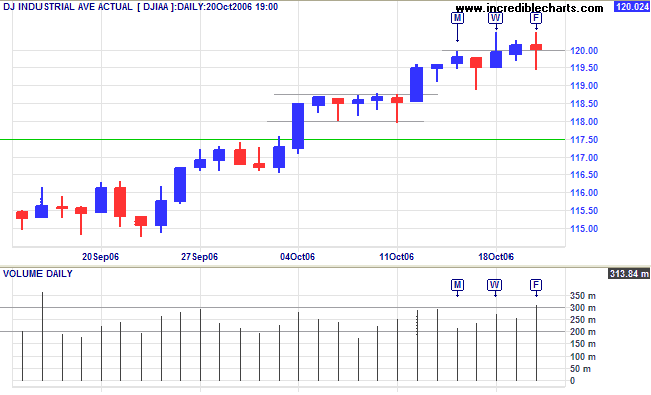
Long Term: The Dow is in a primary up-trend, with support at 10700.
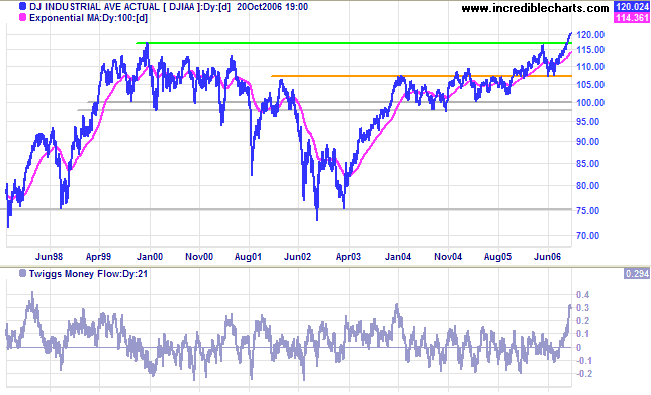
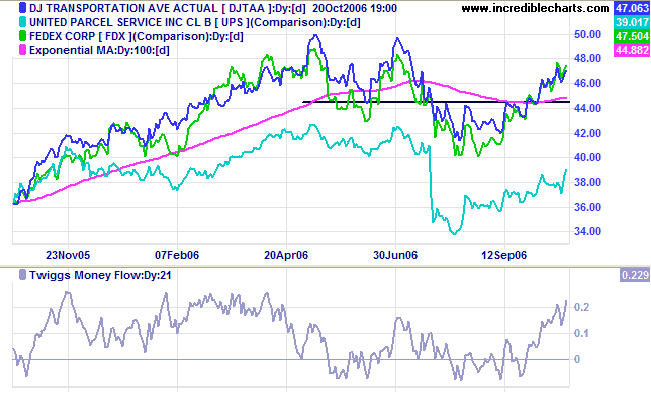
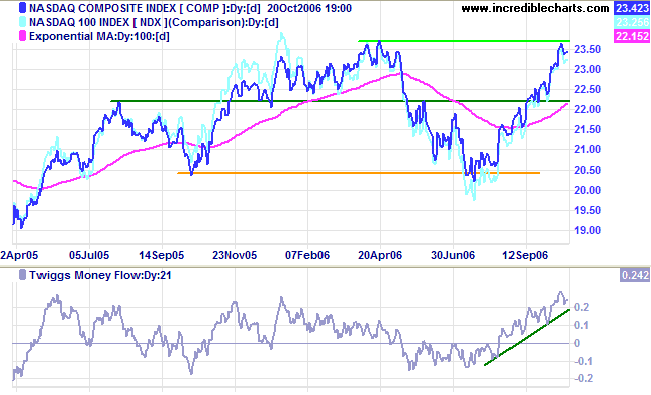
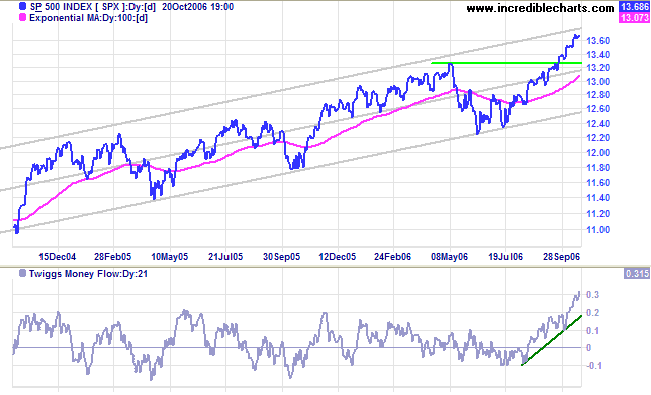
Long Term: The S&P 500 is in a primary up-trend with support at 1220.
LSE United Kingdom
Medium Term: The target for the breakout is 6700 (calculated as 6100 + {6100 - 5500}). Twiggs Money Flow (21-day) signals strong medium-term accumulation.
Long Term: The primary trend is up, with support at 5500.
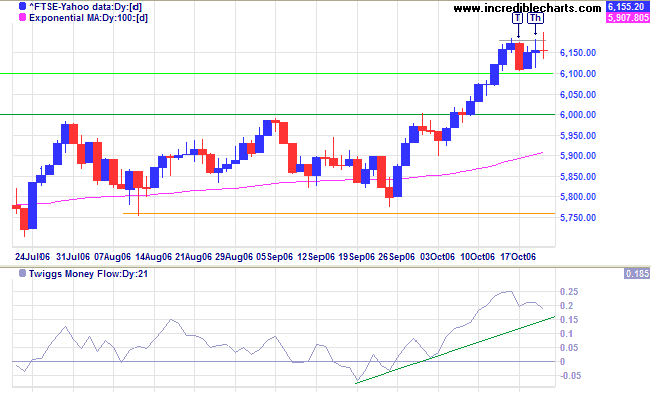
Nikkei Japan
Medium Term: The index has formed a trend channel (plotted at 2 standard deviations around the linear regression line) and appears headed for a test of the upper channel line. Twiggs Money Flow (21-day) is improving, but will only offer a strong signal if the latest trough above zero [+] is completed by a new high.
Long Term: The index is in a primary up-trend, with support at 14200, and appears headed for a test of the April high of 17500.
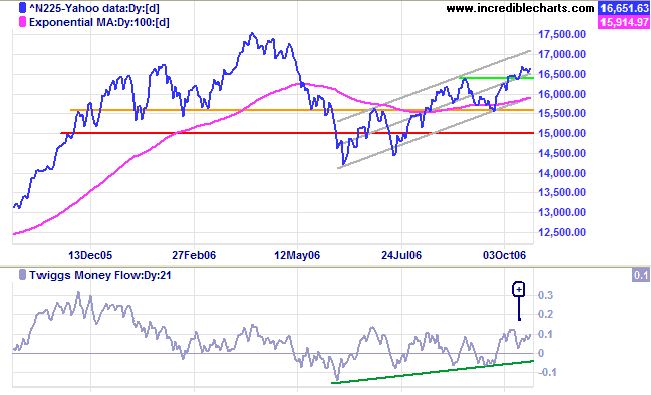
ASX Australia
The actual May high was 5352 and the highest close was 5318; so we are likely to encounter a band of resistance between 5300 and 5350 rather than a single line. The lower border of 5300, however, is likely to provide the sternest test.
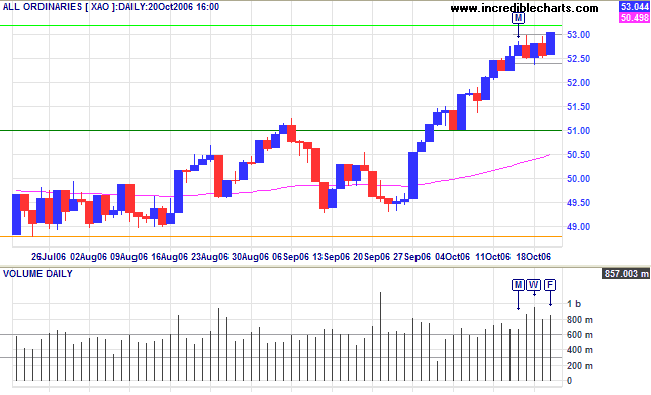
Long Term: The All Ordinaries is in a primary up-trend with support at 4800.
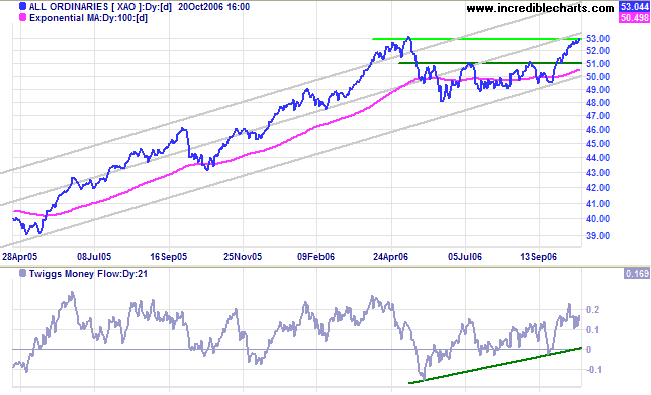
it is in us.
~ Richard Wagner (1813 - 1883)
|
Technical Analysis and Predictions I believe that Technical Analysis should not be used to make predictions because we never know the outcome of a particular pattern or series of events with 100 per cent certainty. The best that we can hope to achieve is a probability of around 80 per cent for any particular outcome: something unexpected will occur at least one in five times. My approach is to assign probabilities to each possible outcome. Assigning actual percentages would imply a degree of precision which, most of the time, is unachievable. Terms used are more general: "this is a strong signal"; "this is likely"; "expect this to follow"; "this is less likely to occur"; "this is unlikely"; and so on. Bear in mind that there are times, especially when the market is in equilibrium, when we may face several scenarios with fairly even probabilities. Analysis is also separated into three time frames: short, intermediate and long-term. While one time frame may be clear, another could be uncertain. Obviously, we have the greatest chance of success when all three time frames are clear. The market is a dynamic system. I often compare trading to a military operation, not because of its' oppositional nature, but because of the complexity, the continual uncertainty created by conflicting intelligence and the element of chance that can disrupt even the best made plans. Prepare thoroughly, but allow for the unexpected. The formula is simple: trade when probabilities are in your favor; apply proper risk (money) management; and you will succeed. For further background, please read About The Trading Diary. |

Author: Colin Twiggs is a former investment banker with almost 40 years of experience in financial markets. He co-founded Incredible Charts and writes the popular Trading Diary and Patient Investor newsletters.
Using a top-down approach, Colin identifies key macro trends in the global economy before evaluating selected opportunities using a combination of fundamental and technical analysis.
Focusing on interest rates and financial market liquidity as primary drivers of the economic cycle, he warned of the 2008/2009 and 2020 bear markets well ahead of actual events.
He founded PVT Capital (AFSL No. 546090) in May 2023, which offers investment strategy and advice to wholesale clients.
